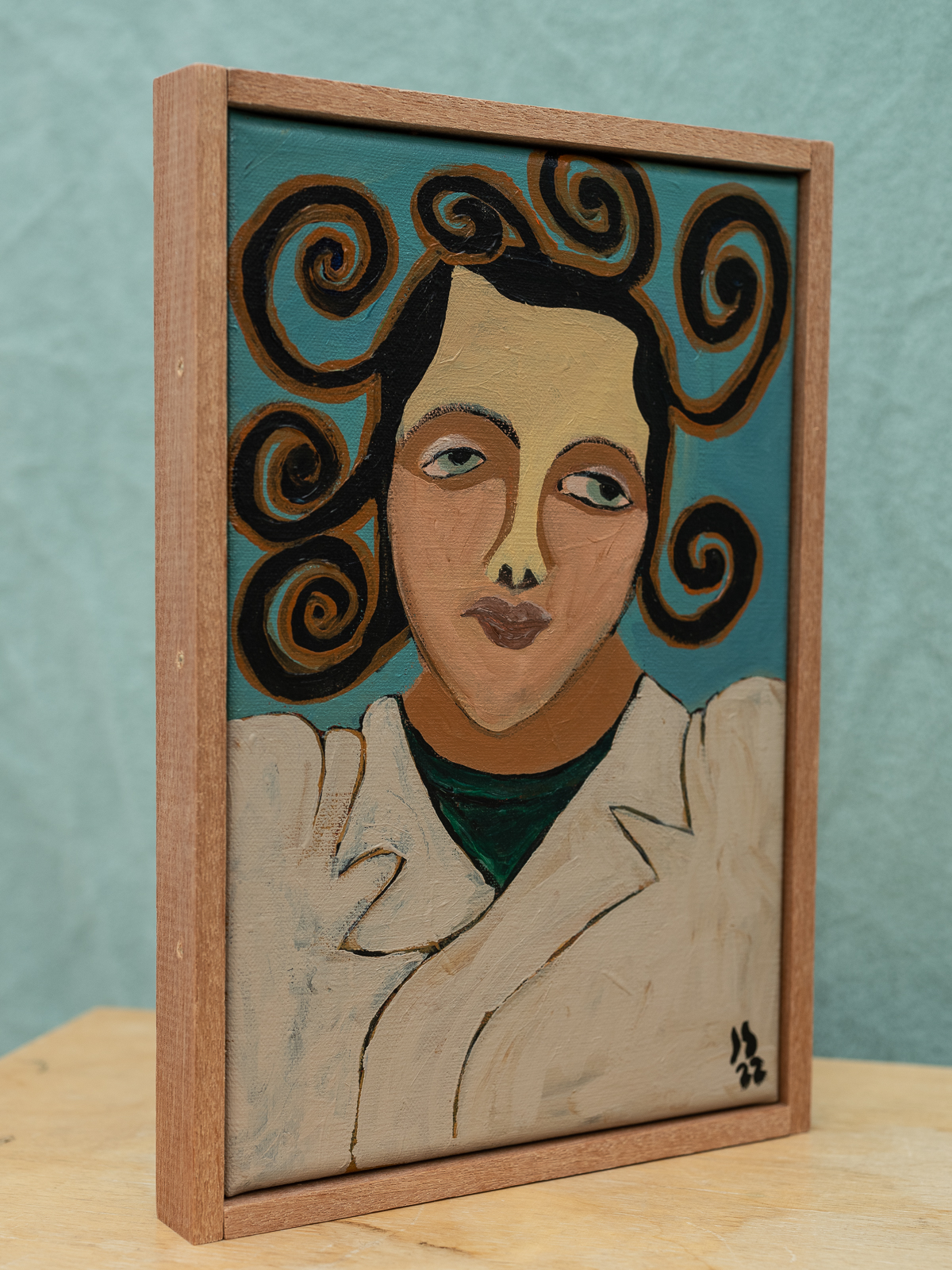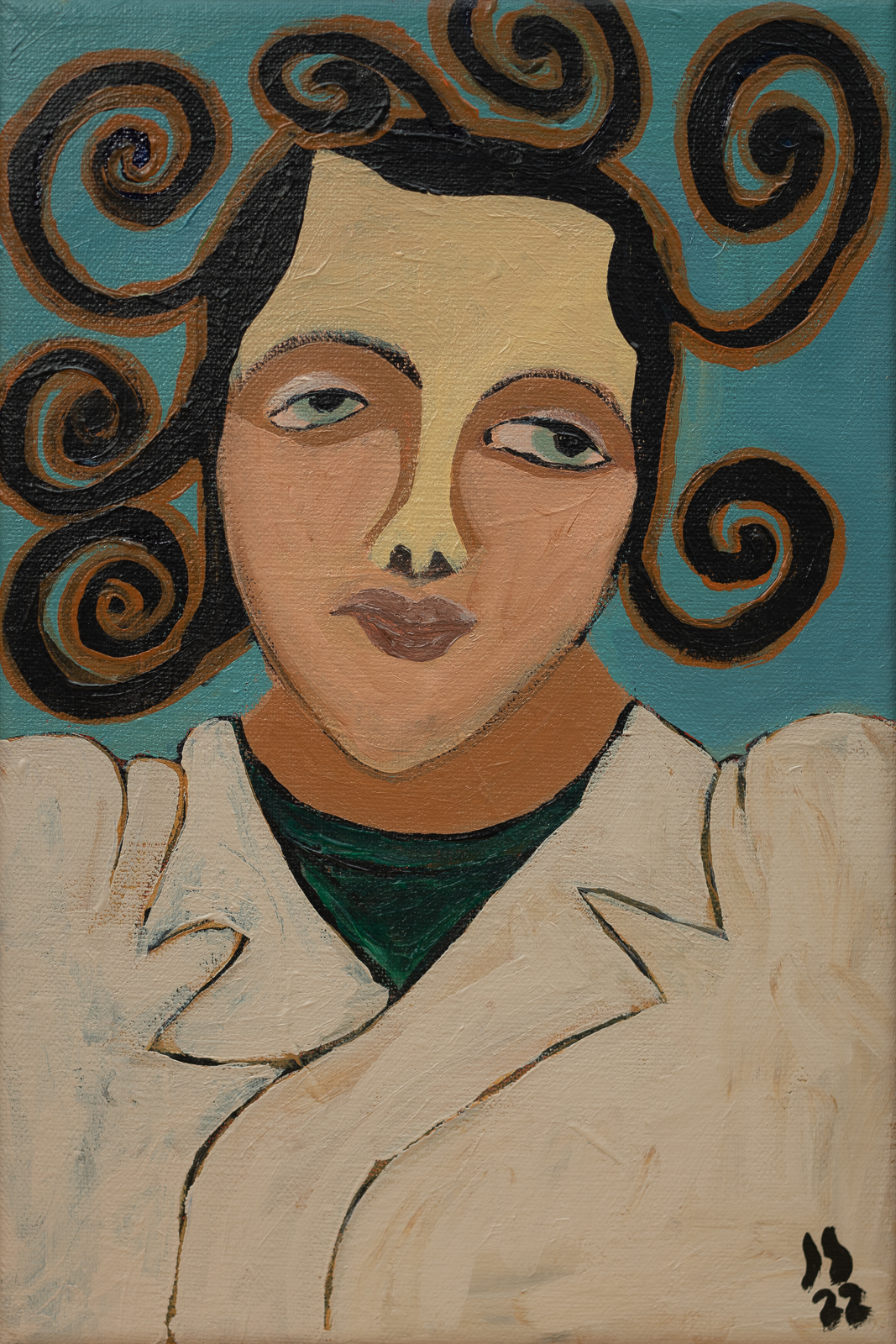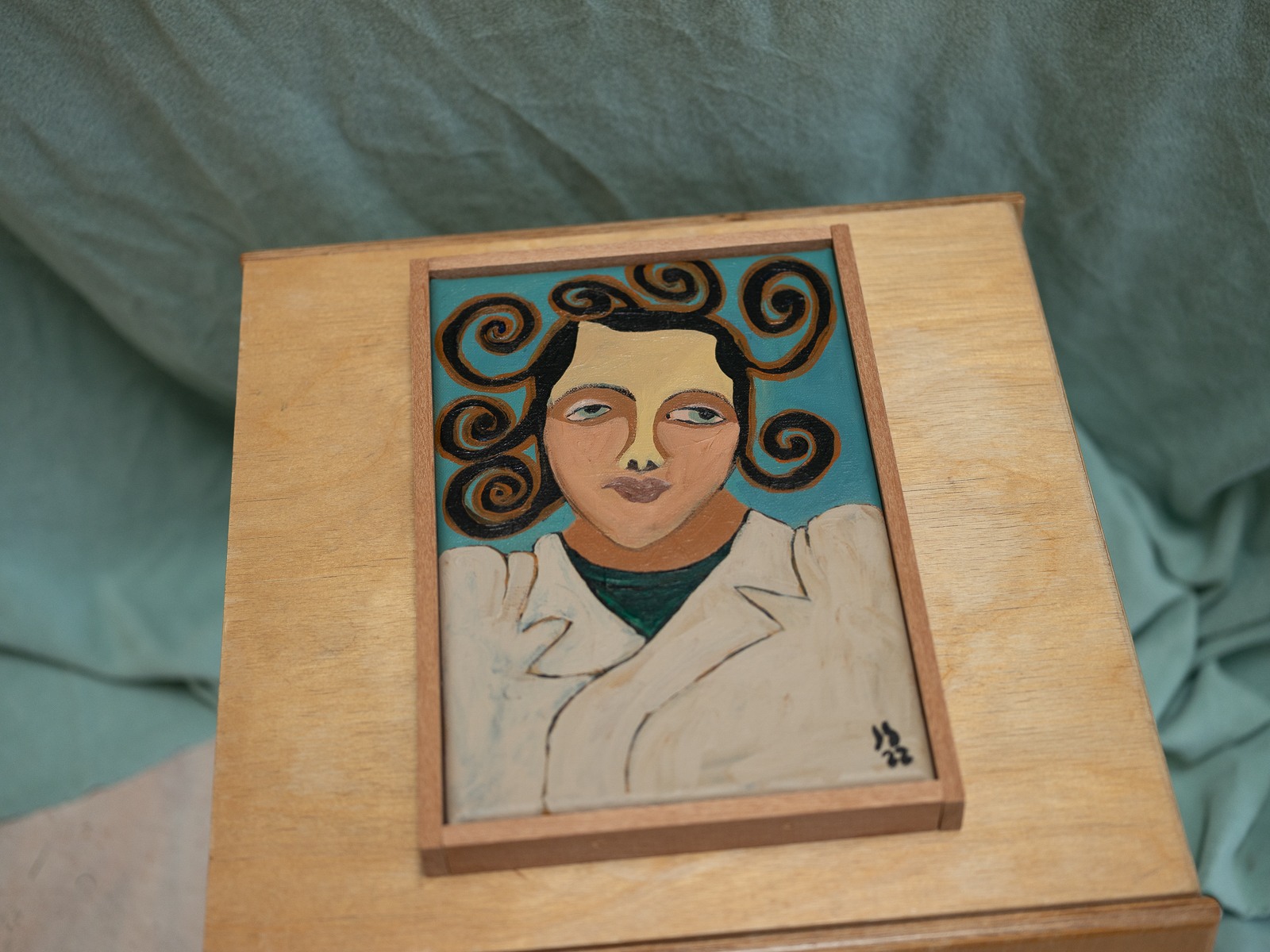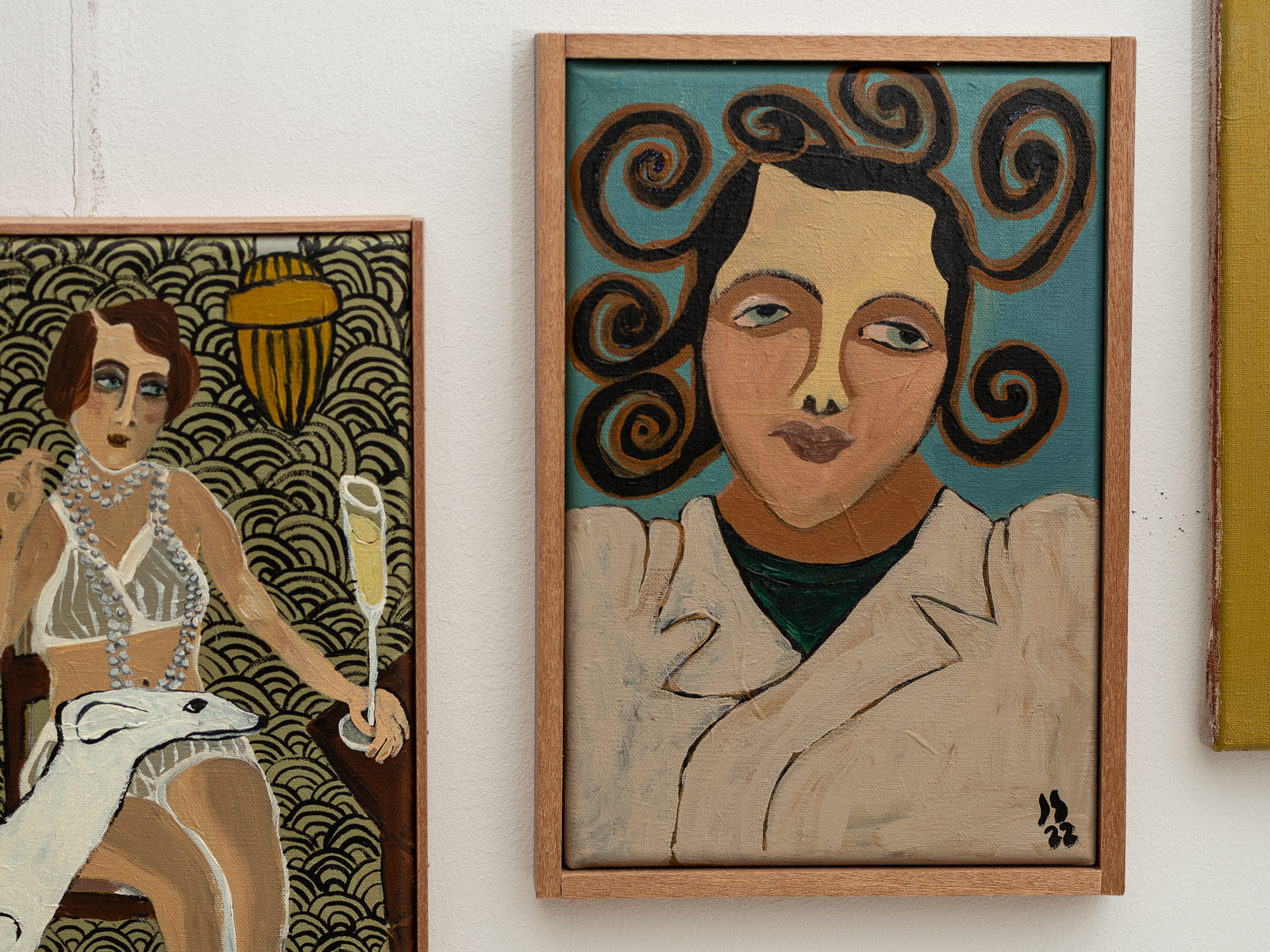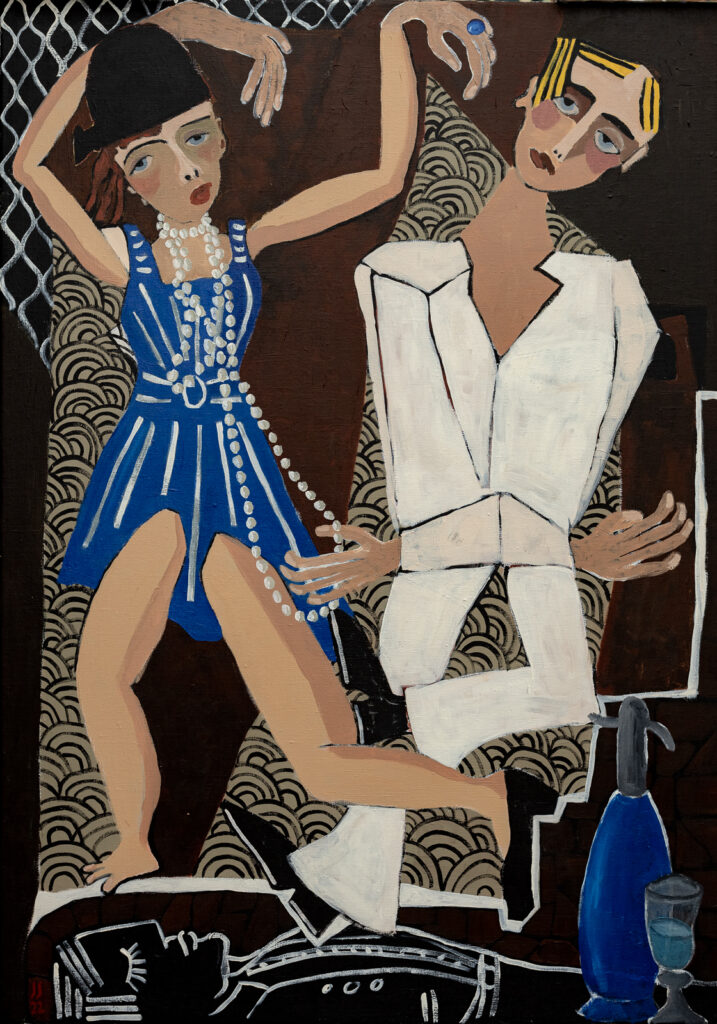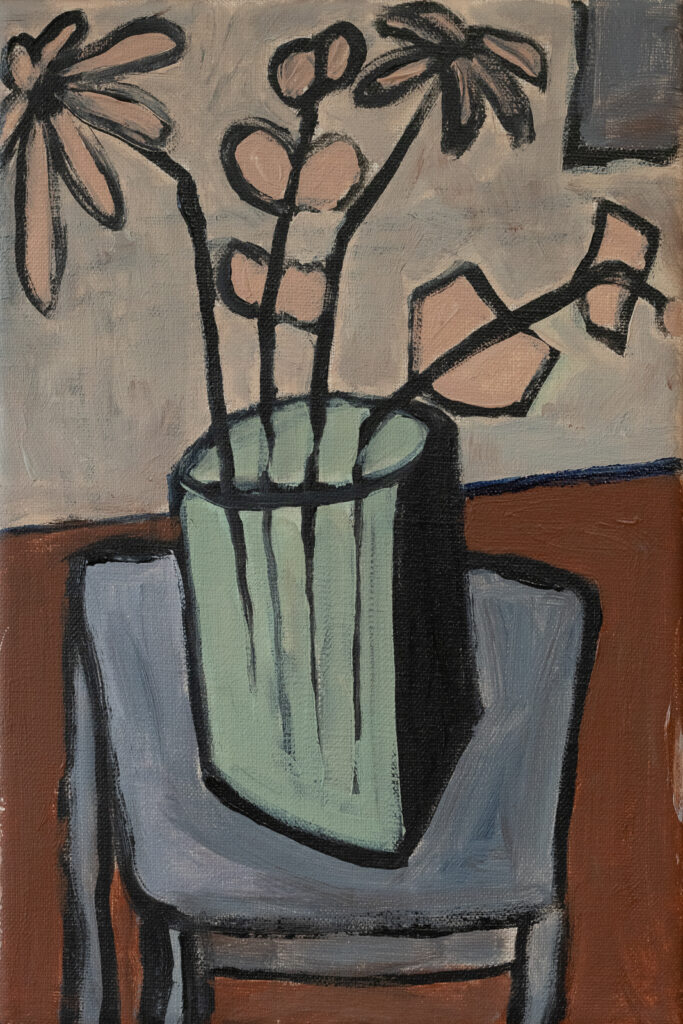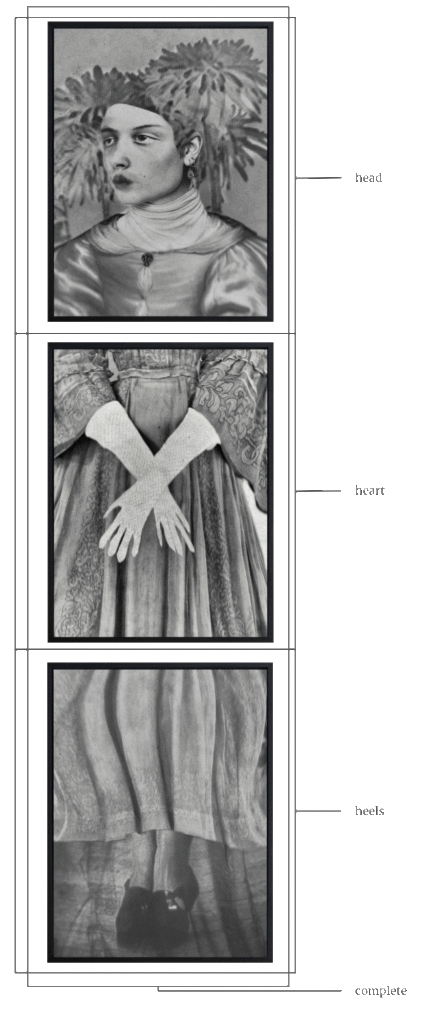N°92
Acrylics on linen
Size painting: 20 cm (w) x 30 cm (h)
Artist: Jitske Schols
Year of production: 2022
Home made hardwood frame by artist, as displayed
Signed
Shipping: worldwide shipping
Description
Kay Boyle (February 19, 1902 – December 27, 1992) was an American novelist, short story writer, educator, and political activist and friends with the Crosbys. Eugene Jolas introduced Caresse Crosby and Kay Boyle to one another in Paris on May 19, 1928 at a Montparnasse nightclub famous for black jazz. Harry and Caresse Crosby were known then as an ultramodern, raffish couple determined to establish themselves as poets and patrons of writers and artists. Boyle had made early, significant contributions to the avant-garde literary scene in the United States publishing in Broom, Poetry, This Quarter, and transition. Despite her emerging success, Boyle was in dire financial circumstances. The Crosbys quickly became concerned with Boyle’s welfare and an intimacy between them developed. Their emotional involvement intertwined with their interest in mutual literary endeavors, and the Crosbys’ Black Sun Press published Boyle’s first collection of short stories and her translation of the first chapter of René Crevel’s Babylon, “Mr. Knife, Miss Fork.” In 1932, three years after Harry’s scandalous death, Caresse published Boyle’s translation of Raymond Radiguet’s The Devil in the Flesh, and Boyle’s novel Year Before Last under her own imprint, Crosby Continental Editions. Her friendship with the Crosbys also provided Boyle with material for a number of scenes in her fourth novel, My Next Bride (1934). Boyle’s senior by ten years, Caresse was Kay’s confidante, an older, wiser sister of sorts. Over the next four decades, however, the relationship between them balanced out as Boyle’s reputation flourished as a writer and social activist, and Crosby made great efforts to promote world peace while she continued to support the work of numerous artists and writers. Both women rejected convention’s dictates about romance, marriage, and motherhood. Theirs was an altruistic friendship based on protecting one another’s honor and careers. (Source: Linda Hamalian)

